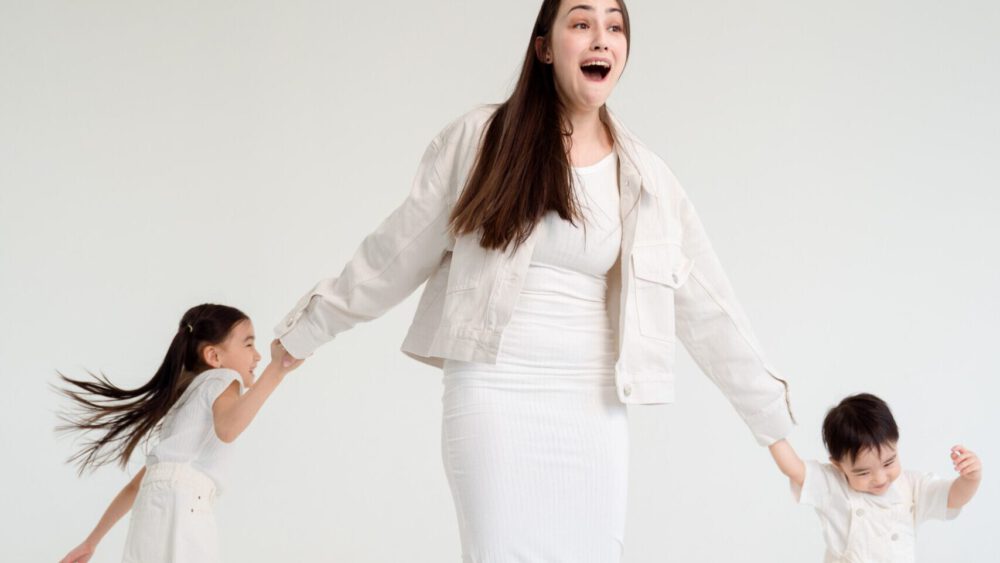Do you have a little party animal on your hands? A curious cat who can’t stop bouncing around the room? A sneaky fox who disappears in the store when you turn your back for a nano second? A flight risk in the parking lot (did somebody say Sonic the Hedgehog)?
How on earth can you “get out there” and get your errands done, when your kiddo is moving in 1,000 different directions?
Here are a few tips from a pediatric occupational therapist that are worth a try:
1) Warm up: Don’t go to the commissary cold. Don’t try the mall without being prepped. Help your child get his energy out before a big errand or outing. Spend a few minutes at the playground. Have him jump on the bed for a bit. Let him ride his scooter in the neighborhood before getting in the car.
2) Job: Give your child a simple job, like holding coupons to give to the cashier or choosing the shopping cart or holding the produce bag while you fill it up. Even the tiniest task can feel like a big deal to your child. By nature, kids want to be helpful, so give them a job!
3) Mouth: Did you know that the mouth is the most primitive way for a human to self-regulate? Give your child something to do that requires jaw work. For a little one, that can mean a pacifier or teether. For a bigger kid, that can be a wad of gum, a chewy German pretzel or some beef jerky. Don’t forget the straws! Straws are a very simple way to calm and organize the brain. Give your child a sports bottle with a big straw.
4) Scavenger hunt: Give your child a list of things to find in the store. For little kids, this might be pictures of things like a grocery cart, someone with a hat, a banana, a red car, etc. For bigger kids, give them their own short grocery list of things that can be reached on the bottom shelves, like flour, toilet paper, bottled water. There are visual grocery apps, like “Bring”, that can make it easy to organize.
5) Carry: Give your child something to carry, like a reusable grocery bag that he fills with some items in the store. A backpack is especially good for younger kids, because they can pack it ahead of time with snacks, toys, books. The weight of the bag or backpack can have a calming effect and can reduce the likeliness of your kid trying to bolt!
6) Push: Let your child push the cart. This is known as “heavy work” and can calm the nervous system by activating the joints and muscles. Little ones may need help or they may need to push the little cart. Have an older sibling push a baby sibling in the stroller.
7) Heavy hold: If your child is riding in the cart, give him something heavy to hold in his lap. This can be a heavy toy you bring from home or you can give him some items to hold, “helping” the adult with the shopping. A big sack of potatoes is a good option, because you’ll find that in the first aisle and they won’t get ruined if they fall out of the cart.
8) Visual timer: Have the older kids use the timer on your phone to see which aisle is the quickest. You can use the “lap” function to keep score. The little kids might enjoy a visual timer from the app store. Set it when you know you are just about done with a certain aisle so they can watch “one more minute” pass by. Having a sense of predictability can make the experience seem less taxing to little ones.
9) Countdown: Before you start down the aisles, give your little ones stickers or coins to correspond with the number of aisles in the store or the number of things that need to be purchased. If you are buying socks, bath towels, coat hangers, dog treats and shampoo, give your child 5 dot stickers. Once you get the item, have them put the sticker on the item. They watch their stickers disappear and this makes it easier to cope with shopping, as they can see the end is in sight because their stickers are disappearing! The same can be done with a coin purse and coins. You can even let them use the coins to get a little treat at the end.
10) Hats and Hoodies: Some kids act out, because they are overwhelmed by the stimulation in a big store. See if your child is calmer if she is wearing a hat while out and about. Other ways to “close off” stimulation include hooded sweatshirts, sunglasses, noise canceling headphones and even keeping the covers on strollers.
Good luck out there everyone!
Written by: Lisa Helenius Previously Published in the Kaiserslautern American



Comments are closed.